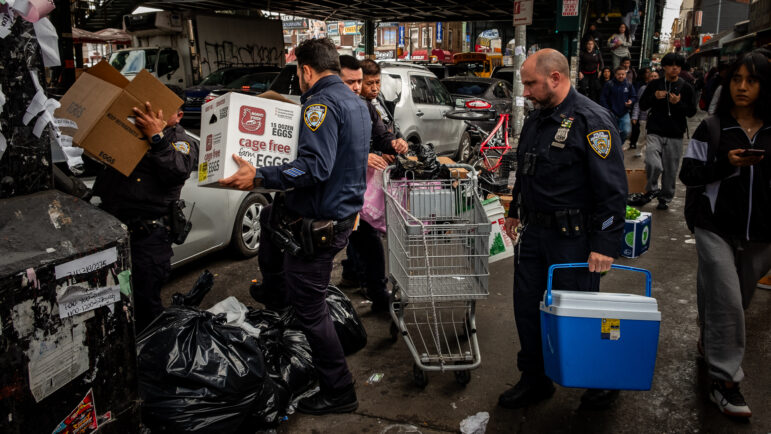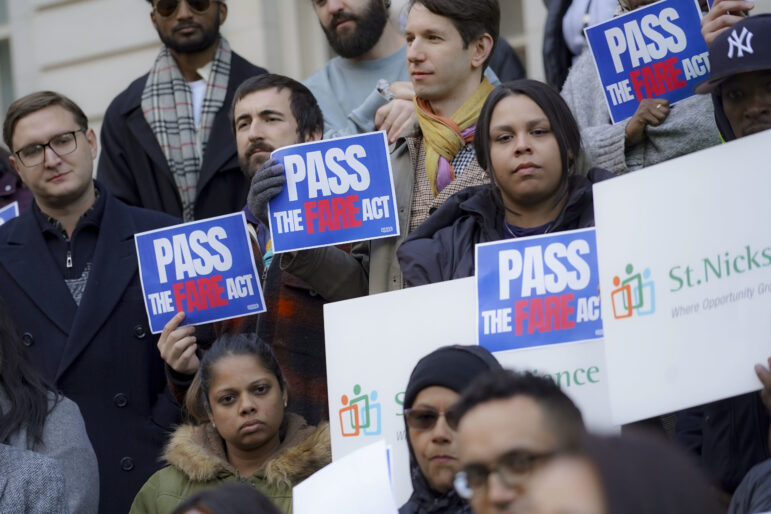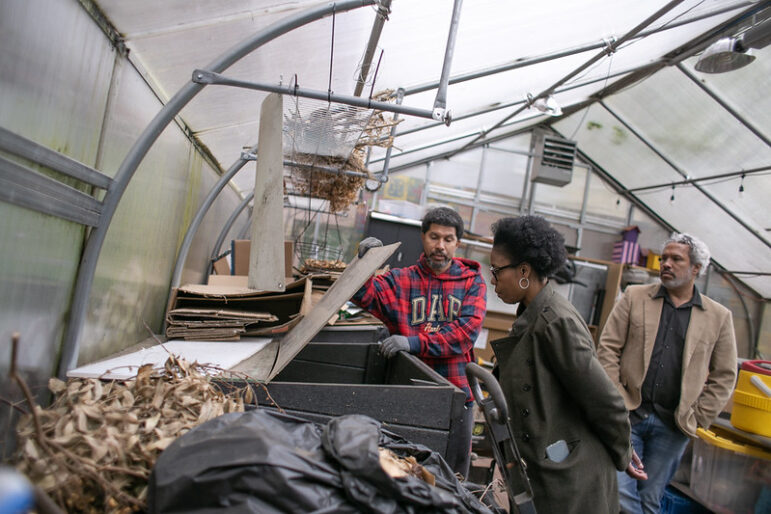In the last few years, there has been an explosive growth in the South Asian community in New York, matched by an increase in the number of publications catering to it. In areas of South Asian concentration such as Jackson Heights, in Queens, or Little India, along Lexington Avenue in Manhattan, one finds a variety of small publications, newspapers as well as free magazines.
Highly visible among them is the English-language India Abroad, a large newspaper based in New York. Printed in six editions from cities across North America, India Abroad has little to distinguish it, other than its ethnic focus, from a newspaper of record like The New York Times. It is at the center of an expanding conglomeration that includes the international India Abroad News Service and the India Abroad Political Action Center, dedicated to lobbying for what it sees as the interests of the Indian community in the U.S.
In other ways, India Abroad is typical. These publications package news from “back home” in Bangladesh or India or Pakistan together with detailed information about local events. But they are more than providers of a service–they also serve as outlets for public discussion and the expression of opinion. They challenge the monolithic view outsiders too often have of an ethnic community, as if differences of opinion were not a feature of life there as well.
These differences of opinion aren’t always easy to take; and sometimes, they are divisive. Recently, a man separated from his wife fed false information of a scandalous nature about her to Parichay, a small Bengali language publication mainly for the immigrant Bangladeshi community. The newspaper printed the information, including a picture of the woman, with no attempt either to ascertain the truth of the matter or to inform the woman. When the members of Andolan, a community-based workers’ rights organization, complained about the newspaper’s sexist indifference, Parichay dismissed their concerns and failed to publish any apology or correction.
But if repressive views are not foreign to ethnic enclaves, neither is a commitment to social change. It is in this context that the SAMAR (South Asian Magazine for Action and Reflection) Collective, a media organization that I helped found, sees itself as a progressive alternative not only to the mainstream of American society in general, but to the mainstream within South Asian immigrant communities. The SAMAR Collective publishes a semiannual magazine in English, produces radio shows on WBAI and is attempting to set up a free Bengali-language publication catering to the Bangladeshi immigrant community in New York. The Collective notes in its mission statement that “its fundamental commitment is to advancing the forces of social and economic justice.”
The SAMAR Collective’s journalism of advocacy and exhortation certainly has precedents; historical examples of similar media efforts come readily to mind from the African-American, Latino and Yiddish-speaking communities, and similar efforts continue to thrive today across the country.
When India and Pakistan both set off atomic explosions in the pursuit of nuclear weapons, the SAMAR Collective protested with a radio show, articles in its magazine and street demonstrations in New York outside the Indian and Pakistani consulates and the United Nations. The demonstrations ensured that local opposition to the reckless nuclearization of South Asia by the Indian and Pakistani governments received wide coverage within the immigrant South Asian community–in India Abroad as well as our own outlets. From its inception, SAMAR has also given attention to working-class South Asian issues in New York–covering, for example, the horrendous working and living conditions of Bangladeshi restaurant workers in the city, an issue that other media venues have not adequately addressed.
As New York grows more and more ethnically diverse because of immigration, advocates for a better city feel a well-intentioned need to be attentive to growing immigrant communities. And outsiders turn most often to ethnic publications and journalists for access and information. It would be a mistake for them to value ethnic media and journalists simply for their ethnicity, without appreciating that those publications themselves harbor diverse and sometimes contradictory opinions and ideas. Ethnic media that do demonstrate an active concern for the city play an invaluable role in helping their readers secure a sense of their place in that city and in the world.
S. Shankar is assistant professor of Englih at Rutgers University.








